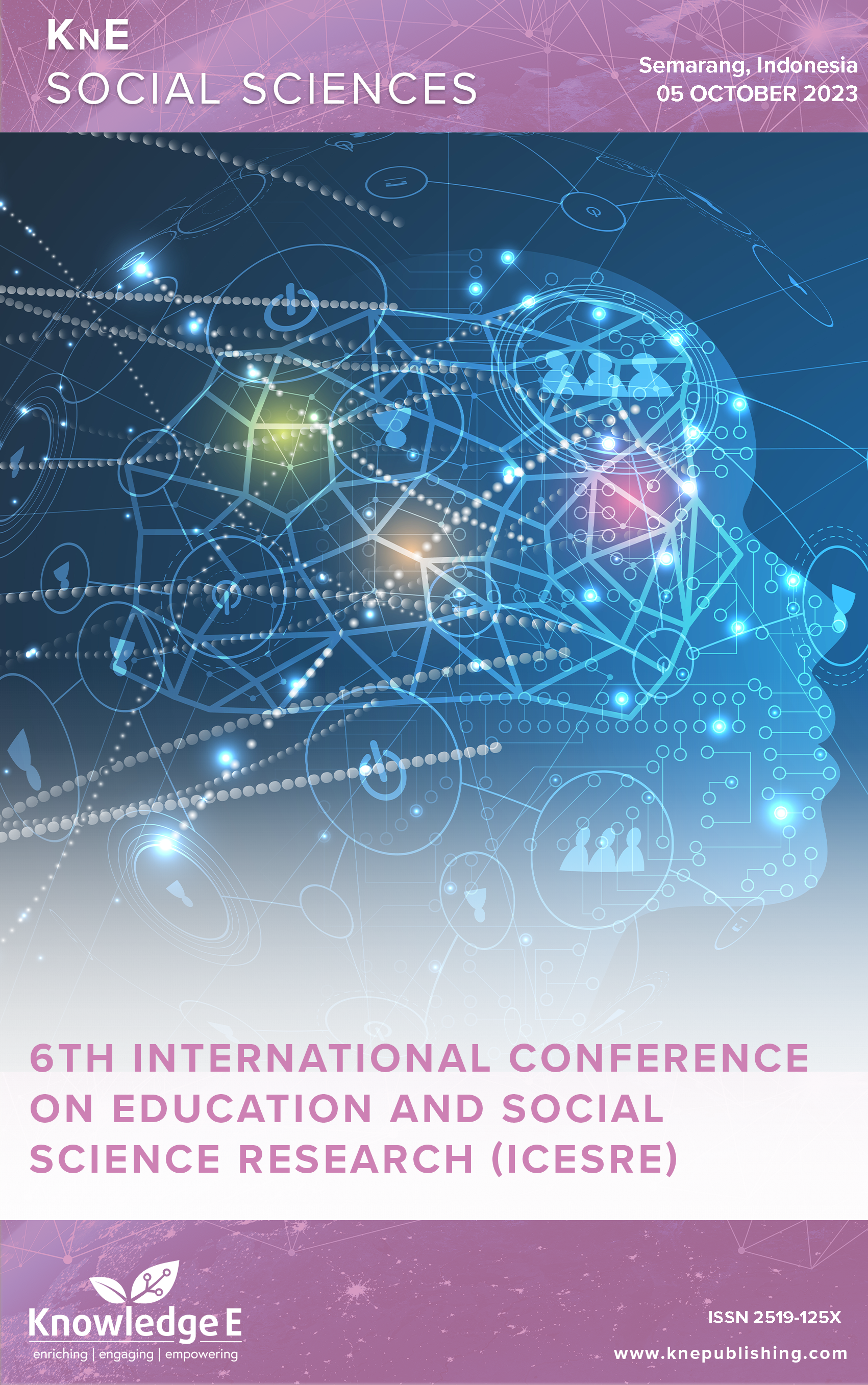Development of Mobile Application through the Concept of Artificial Intelligence to Enhance Pronunciation Skill in EFL
DOI:
https://doi.org/10.18502/kss.v9i6.15254Abstract
The utilization of artificial intelligence (AI)-powered mobile applications has demonstrated potential in enhancing pronunciation skills for learners of English as a Foreign Language (EFL). In this study, Natural Language Processing (NLP) was employed for English student learning. Jonglish, an Android mobile application utilizing Machine Translation and Grammarly, served as the platform. Given the novelty of the field in Indonesia, the researchers aimed to investigate the integration of NLP into the creation of Jonglish. To address the research objective, which is to elucidate the development of a mobile application named Jonglish through the concept of AI to enhance pronunciation skills in EFL, the researchers utilized the Life Cycle Machine Learning, specifically the Cross Industry Standard Process for Data Mining (CRISP-DM). The results of testing the dataset revealed a 100% success rate in translating the data into Indonesian and English using TextBlob as a translator. Meanwhile, SpellingCheck achieved a 98% accuracy rate for spelling checks. With technological advancements, the collaboration of AI and mobile application will undoubtedly drive further innovation, enhancing convenience, efficiency, and engagement for users around the world. Following the progress report, the subsequent stage is the model testing and deployment phase. In this phase, developers and AI engineers operationalize the concepts and algorithms developed in earlier stages and bring them to life within mobile applications.
Keywords: artificial intelligent, mobile application, pronunciation, EFL
References
Pedro F, Subosa M, Rivas A, Valverde P. Artificial intelligence in education: Challenges and opportunities for sustainable development. France: United Nation Educational, Scientific, and Cultural Organization; 2019.
Christopher M. Artificial intelligence definitions. Human-Centered Artificial Intelligence (HAI). Stanford University. September 2020. Available from: https://hai.stanford.edu/sites/default/files/2020-09/AI-Definitions-HAI.pdf
Pikhart M. Intelligent information processing for language education: the use of artificial intelligence in language learning apps. Procedia Comput Sci. 2020;176:1412–9. DOI: https://doi.org/10.1016/j.procs.2020.09.151
Semenenko D, Nazarov Y. Exhibition environment for visitors with visual impairments. Questions of Expertise in Culture, Arts and Design [Internet]; 2019 Jun 6-7; Yekaterinburg, Russia. Dubai: KnE Social Sciences; 2020 [cited 2021 Jun 3]. 6 p. Available from: https://doi.org/10.18502/kss.v4i11.7558. DOI: https://doi.org/10.18502/kss.v4i11.7558
Sánchez-Morales LN, Alor-Hernández G, Rosales-Morales VY, Cortes-Camarillo CA, Sánchez-Cervantes JL. Generating educational mobile applications using UIDPs identified by artificial intelligence techniques. Comput Stand Interfaces. 2020 Jun;70:103407. DOI: https://doi.org/10.1016/j.csi.2019.103407
Liang H, Sun X, Sun Y, Gao Y. Text feature extraction based on deep learning: a review. EURASIP J Wirel Commun Netw. 2017;2017(1):211. DOI: https://doi.org/10.1186/s13638-017-0993-1
Manikanthan SV, Padmapriya T, Hussain A, Thamizharasi E. Artificial intelligence techniques for enhancing smartphone application development on mobile computing. 2020;14(17):4. https://doi.org/10.3991/ijim.v14i17.16569. DOI: https://doi.org/10.3991/ijim.v14i17.16569
Jordan MI, Mitchell TM. Machine learning: Trends, perspectives, and prospects. Science. 2015 Jul;349(6245):255–60. DOI: https://doi.org/10.1126/science.aaa8415
Zhou A. Investigating the impact of online language exchanges on second language speaking and willingness to communicate of Chinese EFL learners: a mixed methods study. Front Psychol. 2023 May;14:1177922. DOI: https://doi.org/10.3389/fpsyg.2023.1177922
Rogerson-Revell PM. Computer-Assisted Pronunciation Training (CAPT): Current Issues and Future Directions. RELC J. 2021;52(1):189–205. DOI: https://doi.org/10.1177/0033688220977406
Ardini SN, Faradilla PE, Budiman TC. The Effectiveness of Discovery Listening to Improve Listening Competence in Higher Education. E-Structural (English Studies on Translation, Culture, Literature, and Linguistics). 2023 May 22;6(01):29-40. https://doi.org/10.33633/es.v6i01.7823. DOI: https://doi.org/10.33633/es.v6i01.7823
Zakiyyah F, Setyaji A, Ardini SN. The analysis of pronunciation application based on the concept of artificial intelligence. In UNCLLE (Undergraduate Conference on Language, Literature, and Culture) 2022 Jul 2 (Vol. 2, No. 01, pp. 559-569).
Behrens JT. Principles and procedures of exploratory data analysis. Psychol Methods. 1997 Jun;2(2):131–60. DOI: https://doi.org/10.1037//1082-989X.2.2.131
Singh V, Kumar B, Patnaik T. Feature extraction techniques for handwritten text in various scripts: a survey [IJSCE]. International Journal of Soft Computing and Engineering. 2013 Mar;3(1):238–41.
Pustejovsky J, Stubbs A. Natural language annotation for machine learning. Cambridge: O’relly; 2012.
Daniel S. Unleashing the power of natural language processing (NLP) advancements. August 4, 2023. https://www.linkedin.com/pulse/unleashing-power-naturallanguage- processing-nlp-advancements-s
Hotz N. What is CRISP DM? January 19, 2023. https://www.datasciencepm. com/crisp-dm-2/
Creswell JW, Creswell JD. Research design: Qualitative, quantitative and mixed methods approaches. 5th ed. Lincoln: University of Nebraska; 2019.
Lutkevich B. Natural language processing (NLP). Tech Accelerator: A guide to artificial intelligence in the enterprise. TechTarget. January 2023. Available from: https://www.techtarget.com/searchenterpriseai/definition/natural-languageprocessing- NLP
Spencer EL. Natural language processing (NLP) techniques & Examples. Revuze. January 13, 2023. Available from: https://www.revuze.it/blog/natural-languageprocessing- techniques/

